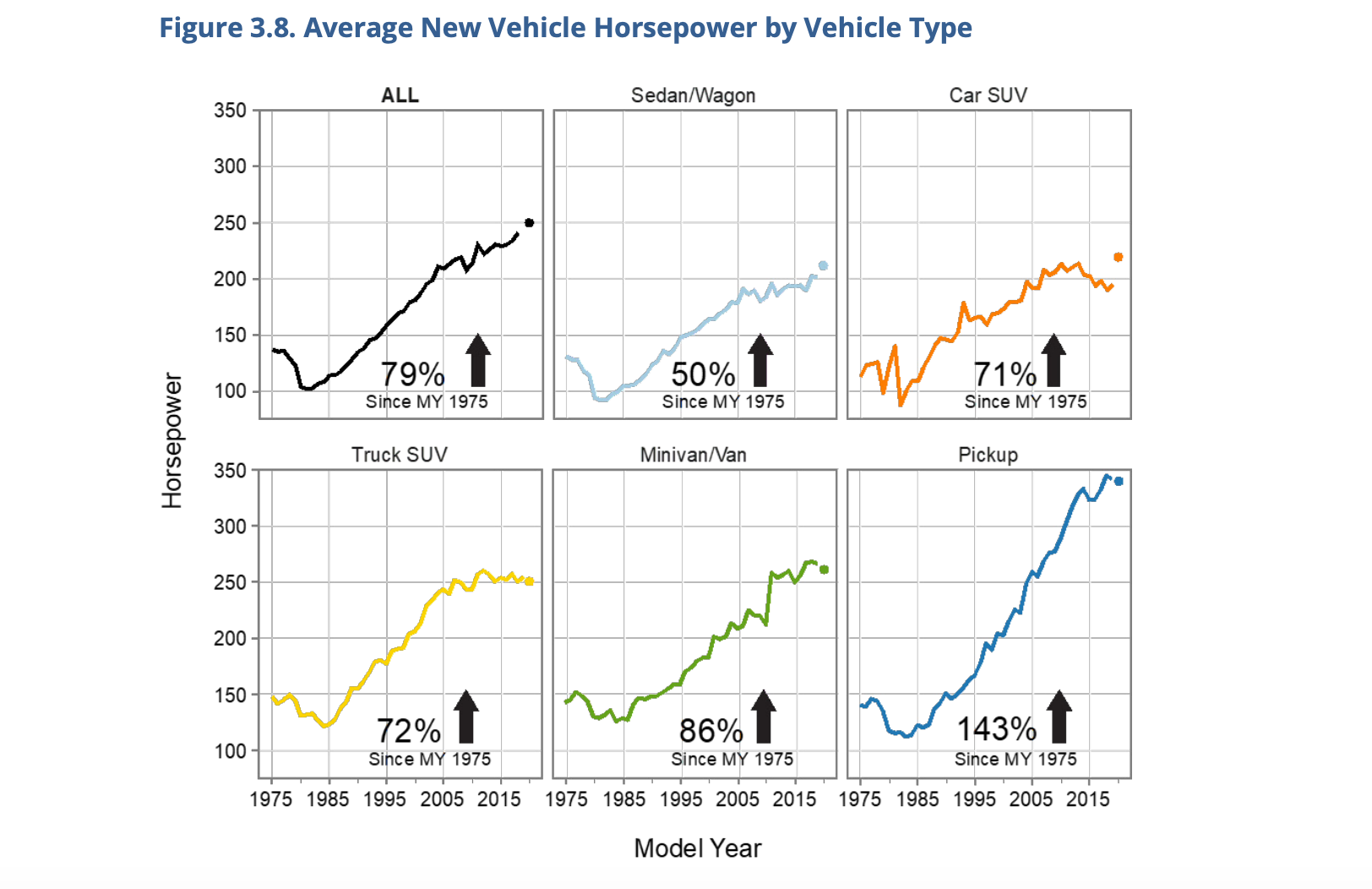American Cars Are Heavier And More Powerful Than Ever: EPA
American cars have been getting heavier and heavier since the early '80s, but have no fear, the American auto industry has been hard at work... to make them more powerful, too, as noted in the EPA's recent year-end report.
You should read the EPA's 2020 full report on automotive trends here, as it is filled with interesting pieces of information. The big one, as the EPA sees it, is that the American auto industry is still struggling to meet Obama-era standards. But I never really loved our Obama-era standards in the first place, so I am a bit more interested in the trends of weight and power on an endless rise.
Here is the EPA charting vehicle weight over the years. You can see that vehicle weight plummeted in the late '70s and early '80s. This came after two oil crises in '73 and '79 with car companies drastically downsizing cars in the face of gas rationing, as Automotive News detailed as part of its 1996 retrospective "100 Events That Made the Industry."
And here is the EPA charting vehicle power over the same period of time. Basically, our blueprint for modern cars started in the early '80s. We've made our cars more efficient and packed with safety gear since (I still remember my mom laughing when I told her "the airbag didn't go off" after I crashed our '89 Volvo that didn't have one at all) but the end result is mostly just cars that are more powerful and heavier.

Confusing the matter slightly is that we Americans haven't exactly been getting safer along the same track. As we've talked about before, if you look at how many people die versus how much we drive, we've been flat for over a decade now.
What is at least fun and clear to see is that in the 1970s, your average American land yacht was so heavy, and your average pre-luxury pickup truck was so light, your average sedan weighed more than a truck, as the EPA notes:
In 1975, the average new sedan/wagon outweighed the average new pickup by about 45 pounds, but the different weight trends over time for each of these vehicle types led to a very different result in model year 2019, with the average new pickup outweighing the average new sedan/wagon by almost 1,600 pounds.
This does lead to the scary realization that, yes, your average pickup truck weighs a ton and a half more than your average sedan, as the EPA elaborates:
By model year 2019, the difference between the heaviest and lightest vehicle types had increased to almost 1,600 pounds, or about 38% of the average new vehicle weight.
So while pickup trucks and cars in the 1970s pretty much all weighed the same, now there is a huge gulf between somebody towering up in, say, a Ram (around 4,800 pounds) versus someone down in an Accord (around 3,200 pounds). Not to repeat things too often at Jalopnik, but the trucks are too big.
I'll not get in too deep on what this has all meant for fuel economy and emissions, but I'll point to a good story from the Netherlands detailing how even with all of our gains in engine efficiency, we're washing that away in SUV weight gains thanks to regulations that incentivize bulk.
So we may be filling our roads with more and more hulking, looming vehicles, at least we can rest easy knowing they are more powerful than ever before, too.

